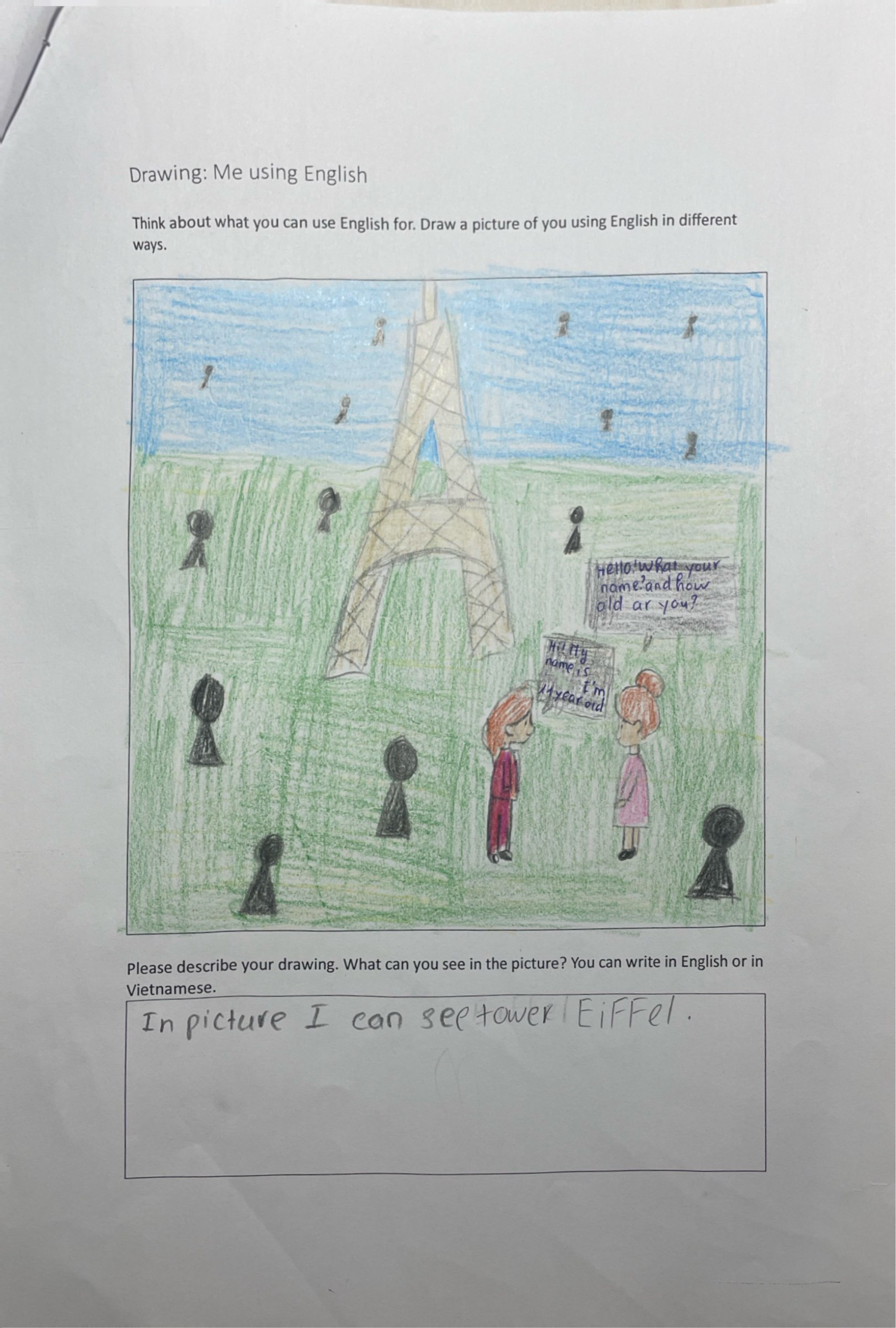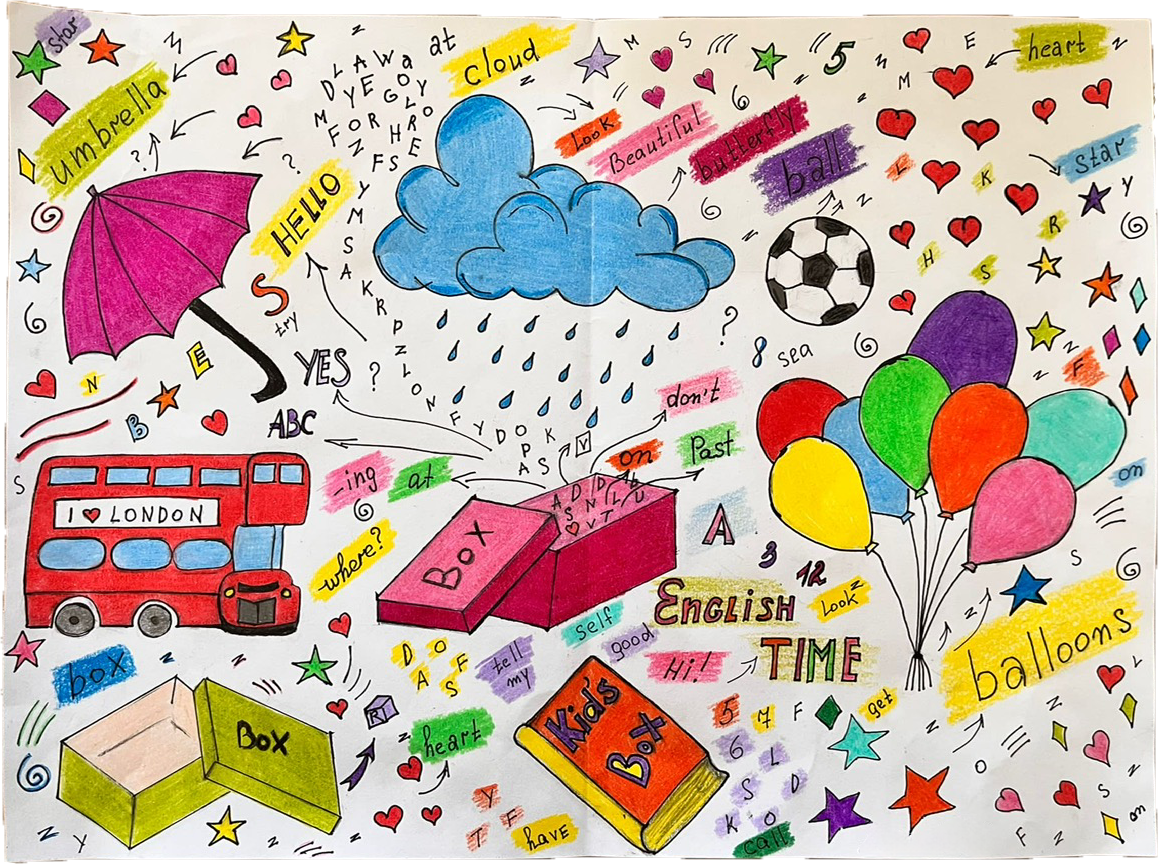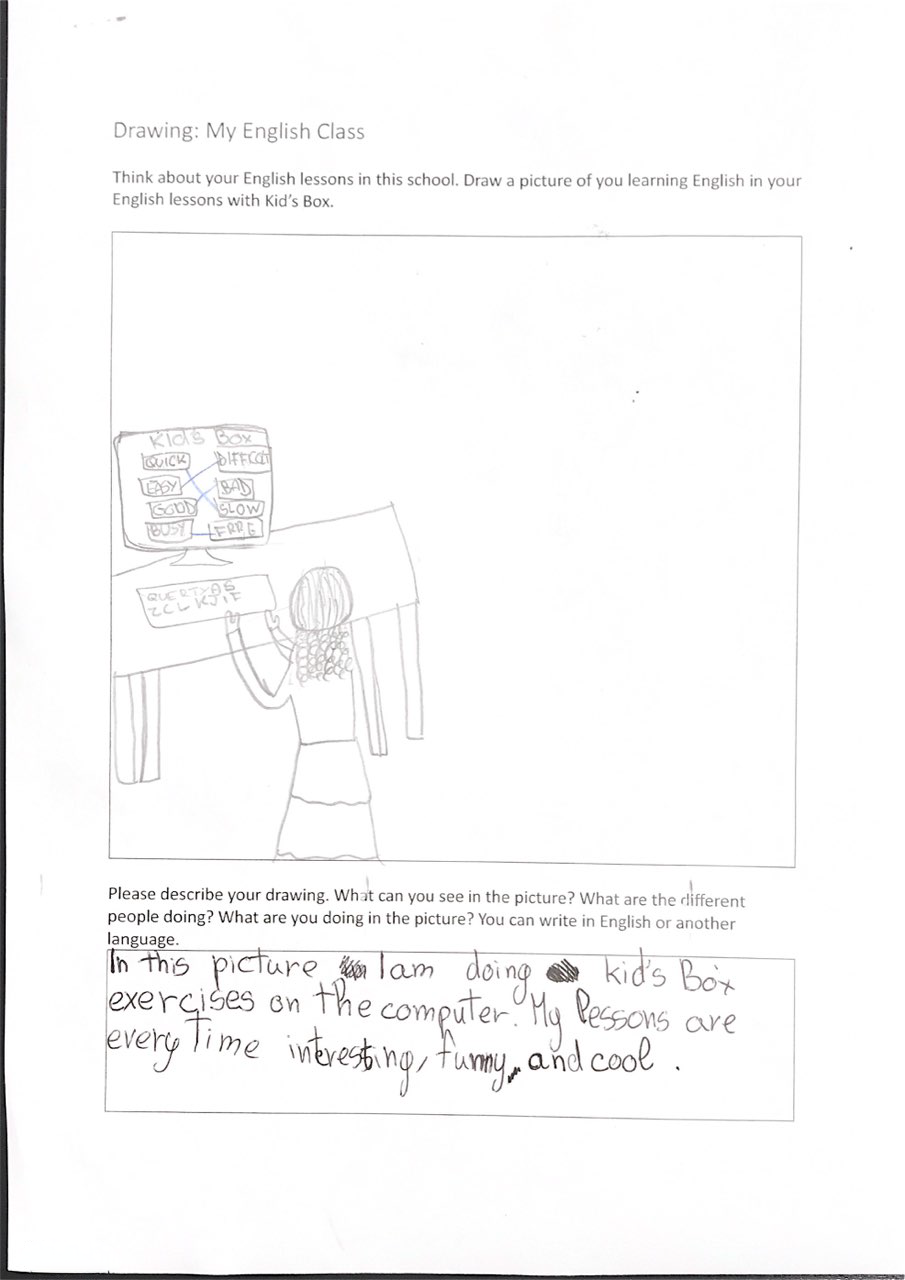02/07/2025
Chatting to friends, getting a good job, or even hanging out in Paris…are just some of the reasons children want to learn English, according to a new study from Cambridge.

The diverse motivations for learning English were depicted in a series of drawings by a group of 6–11-year-olds from schools across Italy, Türkiye and Vietnam. The collection of 85 drawings helped inform a key study which measured the impact of teaching and learning English using Kid’s Box New Generation—a widely recognised course for young English learners. The course provides an easy and fun way to teach English and prepare children for the Cambridge English Qualifications for young learners.
A picture tells a thousand stories
The study also incorporated traditional data collection methods such as teacher questionnaires, focus groups, interviews, and classroom observations. Dr Brigita Séguis, Head of Impact Evaluation at Cambridge University Press & Assessment, said the children’s drawings helped to: “bring out the voices of young learners, which can sometimes be overlooked.”
 Chatting in English and hanging out in Paris is what this young student from Vietnam drew.
Chatting in English and hanging out in Paris is what this young student from Vietnam drew.
Dr Séguis said:
“It was fascinating to see students illustrating themselves using English outside the classroom in familiar situations. Kids drew social situations such as traveling abroad and interacting with hotel receptionists, chatting to friends and family, and even predicting their future job prospects. We also saw young children drawing animals talking to each other in English which was fascinating. These drawings are fantastic because they highlight students' motivations and show what learning English means to them in the real-world.”
Employability already on the minds of children!
Dr Séguis added she was surprised to see employability and career progression already firmly on the minds of young learners.
 ‘I love London’ on the bus in this lovely drawing from a Turkish student.
‘I love London’ on the bus in this lovely drawing from a Turkish student.
“What stood out the most was how some children already know that English will help them get better jobs in the future,” she commented. “Career motivation is not something that you typically think about at such a young age, but we saw lots of examples of students motivated by job prospects. One even told us they wanted to be an astronaut!”
The wider study – three key takeaways
Here are four things we found out:
1. Teachers were positive about the course
Teachers were incredibly positive about the course and the impact it had on their students. Dr Aynur Karakoç, Senior Impact Evaluator at Cambridge University Press & Assessment said: “Teachers told us that the course actually improves students’ confidence in using English and this confidence boost was reflected in the students’ drawings too.”
Other findings included:
- 81% of teachers thought Kid’s Box New Generation helped them create a positive and effective learning environment in the classroom.
- 88% of teachers liked the course.
- 84% of teachers found it easy to teach with course.
2. Students are happy and love the characters!
Classroom conversations and drawings showed students were highly engaged, happy and enthusiastic! The study also found that the interactive stories, songs, activities and memorable characters resonated with children.
 Interesting, funny and cool is how one Italian student described their English class
Interesting, funny and cool is how one Italian student described their English class
Helen Kenyon, Primary Product Manager at Cambridge, was not surprised that children found the course engaging. She commented:
“It's essential that English course material is engaging and not boring for children – they have very different motivations to teenagers and adults. It was lovely to hear the genuine affection people had for the Kid’s Box characters. People knew their names and got really excited to see the characters pop up in the coursebooks and onscreen. It reinforces the fact that children are very much social learners and their affinity for the course characters really influenced their motivation to learn.”
Key findings included:
- 76% of teachers saying children could easily relate to the characters and stories
- Many of the student’s artwork showed hearts and positive comments next to Kid’s Box
- Teachers said reading activities, role plays and songs were the most engaging. Other popular elements included the characters, comic strips and games.
3. Children see the benefits of teachers
Cambridge says another interesting observation was the genuine respect children had for their teachers. This is so important because many studies show the important role teachers play when it comes to motivation and educational outcomes.
Dr Karakoç said:
“It was very clear from the drawings and the wider study that they loved their teachers, which is great because teachers are at the centre of good learning. Despite all the buzz around AI, it was clear from the drawings that human teacher support and interacting with peers were an integral part of the learning process.”
And finally...
Cambridge says that the report highlighted the importance children place on English as an international language in the real-life contexts beyond the classroom. For example, children depicted themselves using English as a ‘bridge language’ to speak to other non-native speakers of English, and several children depicted themselves using English to communicate with others in a range of global settings: both in their home countries and overseas.
Dr Karakoç said: “It was clear young learners view English as a tool for connecting with others around the world, even within their own countries. This provides a rare and valuable glimpse into their worldview, emphasising how language learning is increasingly shaped by a sense of global citizenship.”